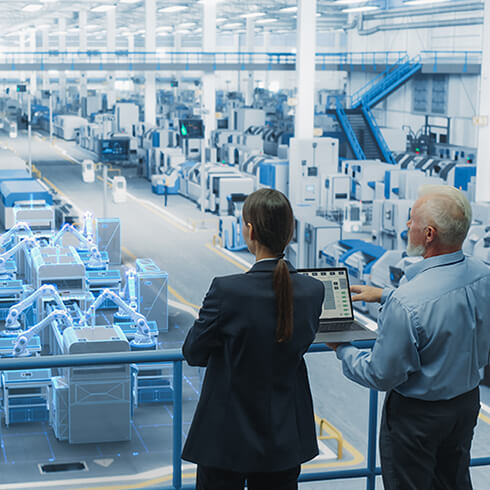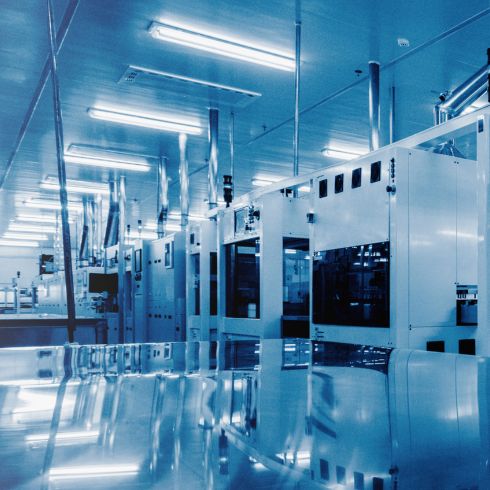Change in manufacturing isn’t hard because machines don’t adapt. It’s hard because people are wired for what already works. Or rather, what used to work.
And even when the data tells us something needs to change, the instinct is to hold the course. Tweak a process here. Install a new tool there. Keep the core behaviour untouched. But real transformation? That’s never mechanical. It’s deeply human.
What follows isn’t a checklist or theory. It’s what we’ve seen inside plants across Europe and beyond—how people actually respond to change, and what separates the factories that transform from the ones that keep circling the same problems. Here’s what we’ve learned.
1. Start where people actually are, not where you want them to be
Walk into any factory and ask management where the biggest issues lie. You’ll receive data, charts, and weekly reports. Then step onto the floor and pose the same question to the line leader or operator. You’ll get a very different response.
And that’s the point. Most change efforts fail before they begin because they’re designed at the wrong level. We assume people are ready for the new KPIs, the updated visual boards, and the lean reviews. However, if they weren’t part of the conversation that created the system, they won’t be part of the energy that sustains it. We often start by sitting down with operators, not executives. We ask: “What gets in your way every day?” From there, we begin to understand the gap, not just in processes, but in trust.
Because here’s the truth: people will nod when you roll out a change. However, they’ll continue doing what they’ve always done unless they believe the system was built with them and for them, not just imposed on them. They need to be part of the solution; they need to feel a sense of ownership. If not, they will certainly be part of the problem and resistance.
2. Get uncomfortable with the truth
Every factory tells two stories: the one in the reports and the one that unfolds during the actual shift. It’s not about dishonesty; it’s about self-preservation. Supervisors soften the metrics to protect the team, while operators hesitate to call out repeated stoppages. Managers report “progress” because the board expects it. However, you can’t fix what people are afraid to admit, and you certainly can’t lead change from a spreadsheet.
That’s why we encourage teams to make performance visible—manually. Hourly tracking on a whiteboard. Physical red and green markers. Not to create pressure, but to share reality. One plant we worked with began tracking output with paper dots on a wall. Within days, the team identified patterns that no one had noticed from the system.
You don’t need more data; you need data that people trust because they created it themselves. Different ways of showing the same data is not progress. Discussing the information that comes from the data in a respectful, trusting, and cooperative manner will lead to new insights and, thus, solutions. Keep it simple, keep it basic, but together interpret the data into information collectively.
3. Accountability works better when it’s horizontal
Traditional thinking says leaders drive accountability. In high-performing factories, it’s peer-to-peer. We’ve seen it happen in the simplest ways. A team member wipes down a machine outside the standard cleaning window. A colleague pauses and says, “Hey, we agreed to clean after this run, not now.” Not as a reprimand, but as alignment.
This scenario occurs primarily in cultures where roles are well-defined, expectations are evident, and individuals feel secure in providing corrections to one another. It begins with routine practices: morning huddles, shift handovers, and short-interval controls that enable the team to collectively assess progress.
One operator explained it best: “It’s easier to stay accountable when I know everyone’s watching—not because they don’t trust me, but because they count on me.” That is culture, and it’s earned hour by hour.
Accountability isn’t about control. It’s about clarity. When everyone on the line knows exactly what good looks like and feels safe speaking up when it’s not happening, you gain real traction.
4. Stop chasing quick wins, start building slow habits
There’s a charm to dramatic change: the Kaizen event that unlocks a 20% gain, the automation upgrade that resolves a bottleneck. However, lasting change doesn’t come from a single big moment; it arises from countless small ones. As the saying goes: improving 1% per day is 365% per year.
We recently worked with a site where the breakthrough didn’t come from a new system—it came when a line leader began tracking team performance on a hand-drawn graph. Nothing fancy—just dots on paper every hour. It changed the team’s awareness, and that changed the outcome.
Sustainable change may seem boring and repetitive, but it’s genuine. The plants that thrive over time are those that prioritize discipline over disruption.
5. Don’t just change what people do. Change what they believe.
In one conversation, a manager stated, “Our systems are fine. Our problem is we don’t follow them.” That’s the paradox. Most factories already possess the SOPs, the maintenance cycles, and the visual boards. What’s missing isn’t instruction; it’s belief.
People follow what they believe in, and belief is built when leaders model the behavior instead of just talking about it. This occurs when supervisors stop the line for root cause analysis rather than pushing for more output, when planners honor feedback from the floor, and when operators see their input shaping decisions.
Real change occurs when individuals believe that their actions matter—not merely because it’s in the system, but because they are recognized, valued, and tied to something larger.
Change Management Starts on the Floor
The term “change management” often triggers groans. For many, it’s become shorthand for extensive decks, checklists, and endless reporting. But change doesn’t occur merely because a process dictates it. It happens when new ways of working are genuinely integrated into how people operate daily.
If you want your plant to perform differently, your people need to see themselves in a new light. As owners. As problem solvers. As the key difference between remaining stagnant and progressing. That’s not just a project. That’s a leadership choice.
It begins by asking: What do we want people to carry with them at the end of each shift? Because that’s what they’ll bring back tomorrow.So, if your performance isn’t changing—even though the plans are clear and the systems are in place—it might be time to ask a different kind of question. Not “What’s missing from the toolkit?” but “Where are we missing real engagement and ownership?”
Change doesn’t start with a strategy deck. It begins at eye level—on the line, in the huddles, in those quiet moments when people either follow the routine or challenge it. It resides in whether teams view change as something done with them or done to them.
This is what also sets TBM apart. We believe that real change occurs only when your people are involved from the start—not disrupted from their routines but engaged in the process with purpose. We help them understand not just what’s changing, but why it matters—for them, their performance, and their future. We don’t work for applause or fancy presentations. We work shoulder to shoulder, sleeve by sleeve, on your factory floor—because that’s where change becomes real.
If you want to explore where your people are in their change journey—or what might be quietly holding them back—let’s have a conversation. Our change management experts are here to assist you.







